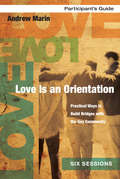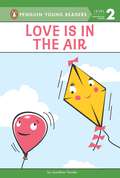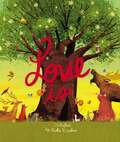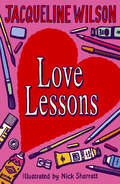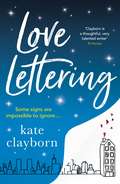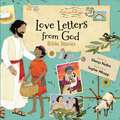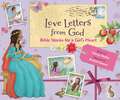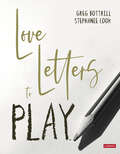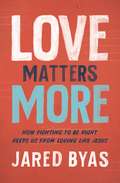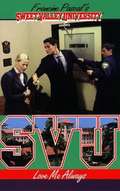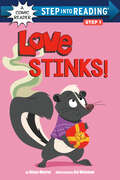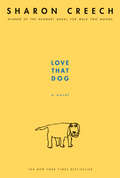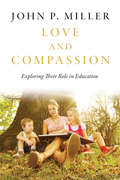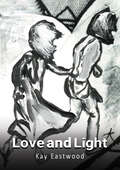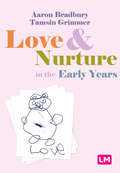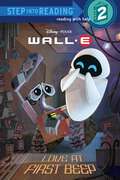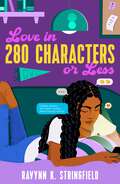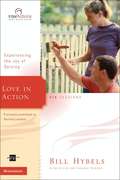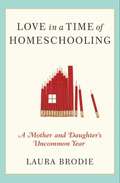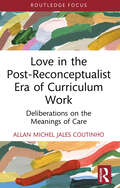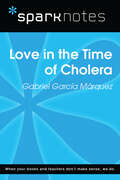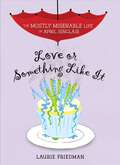- Table View
- List View
Love Is an Orientation Participant's Guide: Practical Ways to Build Bridges with the Gay Community
by Andrew Marin Ginny OlsonMuch of today's culture defines bridge-building and reconciliation as a one-way street that leads to full theological, political and social agreement. Yet Christ demonstrated a different path of religious and cultural engagement to establish his kingdom here on earth. In light of such countercultural principles, the Christian community needs a new view on the issues that divide conservative believers and the lesbian, gay, bisexual and transgender (LGBT) communities. Using the practical applications Andrew Marin has learned over the last decade of living and working in the LGBT neighborhood of Chicago called Boystown, as well as his international speaking and consulting ministry, this six-session, video-based study offers a variety of practical teachings, insights and life lessons. Rather than avoiding the topic of homosexuality, Love Is an Orientation aims to equip the Christian community to bridge the gap between LGBT and religious communities. This is not a study about “fixing” gay people. It’s about getting to know people, engaging them, and loving them like Jesus does. Designed for use with the video.
Love Is in the Air (Penguin Young Readers, Level 2)
by Jonathan FenskeMo Willems meets Dr. Seuss! This is the sweet story of a lonely balloon falling in love with a lively kite, and the adventures they share high in the air--flipping, dipping, spinning, and playing in the clouds. With bright and bold graphics, this accessible Level 2 reader, which is available in both hardcover and paperback, is one that parents and children will read over and over again!
Love Is: An Illustrated Exploration of God’s Greatest Gift (Based on 1 Corinthians 13:4-8)
by Zondervan&“Love is patient, love is kind.&” These familiar words from the Bible begin one of its most beloved and recognized passages. Love Is brings the text of 1 Corinthians 13 to life through an illustrative exploration of God&’s greatest gift to us.Critically acclaimed artist Paola Escobar delivers beautiful, nature-filled illustrations , reminding us that love is a constant positive force in the lives of those touched by it–from beginning to end, through good times and tough times.This beautiful, jacketed hardcover:Will appeal to parents and grandparents of children ages 4-8Draws directly from the New International Reader&’s Version of the Holy BibleFeatures stunning illustrations by award-winning artist Paola EscobarIs perfect for gift-giving for Christmas, Valentine&’s Day and birthdaysIs especially giftable for anniversaries, engagements or weddingsLove Is shares imaginative, thought-provoking depictions of the concepts found in 1 Corinthians 13, presenting opportunities for thoughtful conversations about love, selflessness, service, humility, honor, self control, trust, hope and perseverance. Read this picture book aloud to someone you love ... over and over again.
Love Lessons
by Jacqueline WilsonFourteen-year-old Prue and her sister Grace have been educated at home by their controlling, super-strict father all their lives. Forced to wear Mum's odd hand-made garments and forbidden from reading teenage magazines, they know they're very different to 'normal' girls - but when Dad has a stroke and ends up in hospital, unable to move or speak, Prue suddenly discovers what it's like to have a little freedom. Sent to a real school for the first time, Prue struggles to fit in. The only person she can talk to is her kindly, young - and handsome - art teacher, Rax. They quickly bond, and Prue feels more and more drawn to him. As her feelings grow stronger, she begins to realise that he might feel the same way about her. But nothing could ever happen between them - could it?
Love Lettering: The charming feel-good rom-com that will grab hold of your heart and never let go
by Kate Clayborn'Lyrical and engrossing . . . bursting with humour' - Entertainment WeeklyThe thing is, the letters don't always tell me truths about myself. Sometimes they tell me truths about other people. And Reid Sutherland is - was - one of those people. In the last year, Meg Mackworth's beautiful hand-lettering skills have seen her rocket to social media fame, and now she has a booming business crafting stationery for the stars. But she has a secret: sometimes, she just can't resist hiding messages in her work. Slightly unprofessional, maybe - but harmless. Right? Analyst Reid Sutherland and his gorgeous fiancée had their future mapped out. Until he noticed a pattern in his wedding invitation that made him think twice.When Meg looks up from her desk one day and sees Reid standing in front of her with no wedding ring, holding the invitation she created, she thinks that her career is over.But her life may be about to begin . . .Escape into a beautiful world of craft and romance that will grab hold of your heart and never let go.Praise for Kate Clayborn'Clayborn is a thoughtful, very talented writer' - BookPage'Hilarious and moving and sexy' - Buzzfeed'A warm and lively romance' - New York Times'Clayborn's characters are bright and nuanced, her dialogue quick and clever, and the world she builds warm and welcoming' - Washington Post'A layered and memorable love story . . . smart, sexy and sublime' - USA Today
Love Letters from God: Bible Stories (Love Letters from God)
by Glenys NellistWhat child does not love to receive mail? What if your child could receive and read his or her own personal mail from God? Love Letters from God invites them to do just that! With 18 of the most popular Bible stories, each story is accompanied by a special and encouraging letter. Love Letters from God is the first book in the series written by Glenys Nellist. Unique features include:18 letters from GodGorgeous, bright illustrations by Sophie Allsopp9 stories from the Old Testament and 9 stories from the New TestamentThis picture book is perfect for ages 4–8 and is great for birthdays, Easter baskets, Valentine&’s Day, holiday gift giving, or as an addition to your child&’s digital library.Check out other titles from this series, Love Letters from God: Bible Stories for a Girl&’s Heart, Easter Love Letters from God: Bible Stories, and Christmas Love Letters from God: Bible Stories.
Love Letters from God; Bible Stories for a Girl’s Heart: Bible Stories For A Girl's Heart (Love Letters from God)
by Glenys NellistAre you looking for a way to teach your child about the incredible women in the Bible? This heartwarming picture book will fill girls&’ hearts with the wonder of Lord. With 14 Bible stories about women who made a difference, each story is paired with a heartfelt letter from God in its own envelope and beautiful illustrations. Bible Stories for a Girl&’s Heart is part of the Love Letters from God series written by Glenys Nellist. Unique features include:14 letters from God, enclosed in an envelope your child can open, and personalization space to write your child&’s name on each letterGorgeous bright illustrations by Rachel Clowes7 stories from The Old Testament and 7 stories from The New TestamentThis picture book is perfect for ages 4-8 and is great for birthdays, Easter baskets, Valentine&’s Day, holiday gift giving, or as an addition to your child&’s home library.Check out other titles from this series, Love Letters from God: Bible Stories, Easter Love Letters from God: Bible Stories, and Christmas Love Letters from God: Bible Stories.
Love Letters to Play
by Greg Bottrill Stephanie CookLove Letters to Play explores and cherishes the power of play. It is centred around the transformational power of play to empower children to understand both their own identities and the world around them. The book presents inspirational and thought-provoking words from across the world to open-up our thinking about play and childhood.
Love Letters to Play
by Greg Bottrill Stephanie CookLove Letters to Play explores and cherishes the power of play. It is centred around the transformational power of play to empower children to understand both their own identities and the world around them. The book presents inspirational and thought-provoking words from across the world to open-up our thinking about play and childhood.
Love Matters More: How Fighting to Be Right Keeps Us from Loving Like Jesus
by Jared ByasFor years, Christians have argued, debated, and fought one another while "speaking the truth in love," yet we are no closer to the grace-filled life Jesus modeled. Biblical scholar and popular podcast host of The Bible for Normal People, Jared Byas casts a new vision for the Christian life that's built not on certainty, but on the risk of love. A biblically-based Christian life is not grounded in having all the answers but in a living relationship. This ultimately shifts our focus from collecting the "right" answers to loving others deeply and authentically. With stories and insights drawn from his years as a pastor, professor, and podcast host, Jared Byas calls us back to the heart of the Bible: that truth is only true when it's lived out in love. In a refreshing voice that's both witty and profoundly revelatory, Jared unpacks the concept of truth, its meaning, and why we so often fight over it. He makes a compelling case for how what we believe is less important than how we believe it and that, more than anything else, telling the truth in love is about following Jesus.For anyone who has ever felt forced to choose between truth and love, acceptance and rightness, this book offers a path forward beyond truth wars and legalistic religion to a love that matters more.
Love Me Always (Sweet Valley University #44)
by Francine Pascal Laurie JohnLove never dies.... Nick Fox is leaving Sweet Valley -- forever. In exchange for his testimony against Clay DiPalma, the government is sending him away with a new identity, and not even his beloved Jessica Wakefield can know where -- or who -- he'll be. Nick and Jessica can hardly stand the pain of saying good-bye. And there's a shocking twist of fate in store for them both.... Elizabeth Wakefield can't deny her heartbreaking suspicions about what really happened between Tom Watts and Dana Upshaw... and she's about to hear the awful truth from Dana herself. Will Elizabeth write it off as one of Dana's wicked games? Or will she find the strength to confront the real liar -- the man she loves?
Love Stinks! (Step into Reading)
by Diana MurrayCan a skunk find love? Kids will LOVE reading this sweet and funny Comic Reader—combining the trusted learning tools of Step into Reading with the kid favorite comic panels and word balloons—perfect for Valentine's Day and everyday!Frog love.Fly love.Where is my love?Everywhere he goes it seems like all the other animals have someone to love . . . except for Skunk. Even gnats and snails and bats and whales have partners by their sides. Will Skunk find love? Comic readers are told almost entirely in action-packed dialogue! Simple, graphic, paneled layouts introduce emergent readers to the joy of comics. Step 1 Readers feature big type and easy words for children who know the alphabet and are eager to begin reading. Rhyme and rhythmic text paired picture clues help children decode the story.
Love That Dog: A Novel
by Sharon CreechWith a fresh and deceptively simple style, acclaimed author Sharon Creech tells a story with enormous heart. Written as a series of free-verse poems from Jack's point of view, Love That Dog shows how one boy finds his own voice with the help of a teacher, a writer, a pencil, some yellow paper, and of course, a dog. With classic poetry included in the back matter, this provides the perfect resource for teachers and students alike.<P><P> "I guess it does<P> look like a poem<P> when you see it<P> typed up<P> like that."<P> Jack hates poetry. Only girls write it and every time he tries to, his brain feels empty. But his teacher, Ms. Stretchberry, won't stop giving her class poetry assignments—and Jack can't avoid them. But then something amazing happens. The more he writes, the more he learns he does have something to say.
Love and Compassion: Exploring their Role in Education
by John P. MillerAcademics often speak about love for their subject, mathematicians discuss their love for figures and numbers, and elementary school teachers speak about their love of children. As multidimensional as love is, it is often a taboo subject relative to teachers and students. In Love and Compassion, John P. Miller explores different forms of love, including self-love, the love of others, compassion, the love of learning, and cosmic love, and how these dimensions of love have the potential to improve education. Love and Compassion is both a practical and conceptual work, and will interest those involved in the study and practise of holistic and contemplative education. In addition to the seven dimensions of love, Miller’s evaluation includes nonviolent action, the love of beauty, and how they are crucial to the practise of teaching.
Love and Death at the Mall
by Richard PeckThe award-winning writer for young adults comments on the creative process; American values in schools, malls, and elsewhere; changing lifestyles and expectations; and how it all relates to the kinds of writing to which young readers respond.
Love and Light
by Kay EastwoodDrawing and painting is a daily joy in life for me. The impact the indigenous people from Native American reserved throughout British Columbia has never left me. They were my first Art and Design students. Everything the young and elders said or did oozed a pure and authentic spirituality I had never experienced before. Their words for the planet are humbling. My friend’s grandfather was Chief Dan George.
Love and Nurture in the Early Years
by Tamsin Grimmer Aaron BradburyIf ever there was a time for love and nurture it is now. Love and Nurture approaches are intertwined and impossible to focus on in isolation. This practical book for Early Years students and practitioners includes real-life case studies and practical examples alongside academic underpinning and essential theory. It supports students to understand and explore the need for and importance of Love and Nurture in early years practice. The book focuses on key child developmental factors including brain development, attachment awareness, love languages and nurturing touch, the science of nurture, the theory of love and nurture and building relational practice.
Love and Nurture in the Early Years
by Tamsin Grimmer Aaron BradburyIf ever there was a time for love and nurture it is now. Love and Nurture approaches are intertwined and impossible to focus on in isolation. This practical book for Early Years students and practitioners includes real-life case studies and practical examples alongside academic underpinning and essential theory. It supports students to understand and explore the need for and importance of Love and Nurture in early years practice. The book focuses on key child developmental factors including brain development, attachment awareness, love languages and nurturing touch, the science of nurture, the theory of love and nurture and building relational practice.
Love at First Beep (Step into Reading)
by RH DisneyWALL•E IS THE last trash-collecting and trash-condensing robot on Earth. When he encounters EVE, a probe robot sent to evaluate signs of vegetation, his lonely life suddenly changes and he falls in love. Can this robot romance survive? Find out in this Step 2 reader, based on the Disney•Pixar movie, WALL•E.
Love in 280 Characters or Less
by Ravynn K. StringfieldBlack college student Sydney Ciara navigates academics, love, and the online space, in this coming-of-age told through her blog posts, messages, and more!Sydney Ciara Warren is excited as she starts her first year of college, but also nervous. Despite her interests in writing and fashion, she has no idea what path will ultimately be right for her. As she tries to figure out her place on campus and in the world, she finds solace in blogging about her life, putting together outfits with meaning, and spending time online. It’s within the digital space that she connects with someone who goes by YoungPrinceX. She may not know “X” in real life, but that doesn’t stop her from developing a crush on him. Except she's also navigating her first romantic relationship, with a sweet boy on campus named Xavier (who maybe could be X???).Can Sydney Ciara not only make it through her first semester, but thrive in real life, as much as she seems to be thriving online?Perfect read for those looking for:*New Adult *Black love stories*Novels told in nontraditional formats*Main characters who love fashion*Chronically online characters like in Dear Wendy by Ann Zhao
Love in Action
by Bill Hybels Kevin HarneyDiscover the joy of serving others. How can you identify full devoted followers of Christ? Their servant lifestyle gives them away! In our “me-first” culture, servanthood is the earmark of men and women who have discovered the joy of giving. But the secret to servanthood isn’t running yourself ragged trying to be everything to everyone—it’s pouring freely out of a full cup the things you were designed to give. Love in Action shows how you can break the back of self-centeredness and experience the satisfaction of serving others wisely and effectively. You’ll discover how sharing your unique personal resources and spiritual gifts can become a source of strength to others, worship and praise to God, and a personal delight that nothing else can match! Interactions—a powerful and challenging tool for building deep relationships between you and your group members, and you and God. Interactions is far more than another group Bible study. It's a cutting-edge series designed to help small group participants develop into fully devoted followers of Christ.
Love in a Time of Homeschooling: A Mother and Daughter's Educational Adventure
by Laura Brodie"I had always thought of homeschooling as a drastic measure. . . . But when my daughter decided that she would rather hide in a closet than complete her homework, I knew that it was time for me to become a schoolteacher, if only for a little while." After years of watching her eldest daughter, Julia, struggle in a highly regimented public school system, Laura Brodie determined to teach her ten-year-old at home for a year. Although friends were skeptical and her husband predicted disaster-"You can't be serious"-Brodie had visions of one ideal year of learning. The monotony of fill-in-the-blank history and math worksheets would be replaced with studying dinosaurs and Mayan hieroglyphics, conversational French, violin lessons, and field trips to art museums, science fairs, bookstores, and concerts. But can one year of homeschooling make a difference? And what happens to the love between mother and daughter when fractions and spelling enter the relationship? Love in a Time of Homeschooling is a funny and inspiring story of human foibles and human potential, in which love, anger, and hope mingle with reading, math, and American history. As today's parents ponder their children's educations, wondering how to respond to everything from homework overload to bullying to the boredom of excessive test preparations, homeschooling has become a popular alternative embraced by millions. Short-term homeschooling is the latest trend in this growing movement. Brodie gave her daughter a sabbatical to explore, learn, create, and grow-a year of independent research and writing to rejuvenate Julia's love of learning. The experiment brought out the best and worst in the pair, but they worked through their frustrations to forge an invaluable bond. Theirs is a wonderful story no parent should miss.
Love in the Post-Reconceptualist Era of Curriculum Work: Deliberations on the Meanings of Care (Studies in Curriculum Theory Series)
by Allan Michel Jales CoutinhoBy employing the autobiographical method of currere and bifocalization, this book sheds light on the significance of love and the ethics of caregiving as means to transform curriculum studies into a post-reconceptualist and collective endeavor. Advancing an understanding of curriculum as a "collective public moral enterprise," it critically asks whether we can build a world where love is not negotiated, but only proliferated. Through the creation of short and interconnected autobiographical narratives about the meanings of love, the author provides pivotal insights for curricularists who labor in conflicting and paradoxical contexts. As such, the book seeks to demonstrate how the labor of "love fortification" may be accomplished in a world of agonistic, antagonistic, and competitive becoming(s). Highlighting the role of caregiving, this book questions the role of evaluations in post-reconceptualization and provides insights for educators and policymakers on how to promote "actualization" and reconciliation in schools in contexts across the global-north and -south. Engaging with a long scholarly tradition that ultimately seeks to understand the meanings of love in our lives and in our work, supporting the "historization" of the field of curriculum, and with an international focus, this book will appeal to scholars and students with interests in curriculum studies and curriculum theory.
Love in the Time of Cholera (SparkNotes Literature Guide Series)
by SparkNotesLove in the Time of Cholera (SparkNotes Literature Guide) by Gabriel Garcia Marquez Making the reading experience fun! Created by Harvard students for students everywhere, SparkNotes is a new breed of study guide: smarter, better, faster. Geared to what today's students need to know, SparkNotes provides: *Chapter-by-chapter analysis *Explanations of key themes, motifs, and symbols *A review quiz and essay topicsLively and accessible, these guides are perfect for late-night studying and writing papers
Love or Something Like It (The Mostly Miserable Life of April Sinclair #4)
by Laurie FriedmanNow that April is officially going out with hot-boy-next-door Matt, she's head over heels. She loves how he makes her feel . . . most of the time. But one minute he's sweet and attentive, and the next, it's as if he's forgotten they're together. April just wants things to be great between them, like when they started going out. Now as summer approaches, she has to decide if she'll go to camp with her best friends, Billy and Brynn, or stay home and be with Matt. April wishes she could do it all―keep up with friends, have summer adventures, please her annoying family, and save her new relationship. But with Matt's affection running so hot and cold, she has some tough decisions to make.
